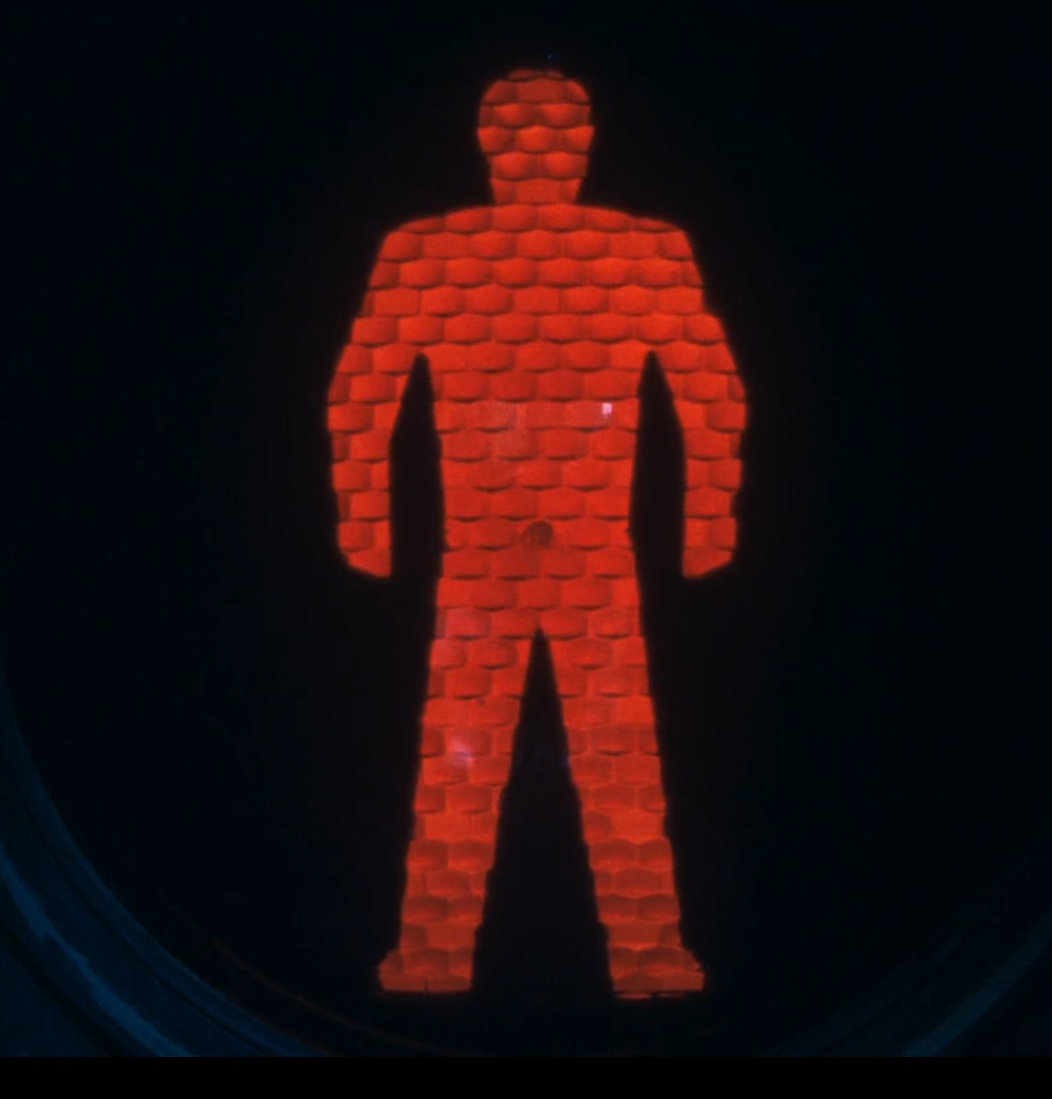Hello!
I’ve bought new parts and I am awaiting their arrival so I can build my brand new computer. I’ve decided to go for Arch Linux with KDE plasma or perhaps Gnome as my desktop environment but that’s as far as I’ve come.
https://pcpartpicker.com/list/Xw4sRv
I figured I would ask the community if they have any tips or suggestions, thanks!
One thing I suggest is:
You’re trying to get something working but it isn’t going anywhere? Try again later.First, because of the obvious calming down, since stress can affect the person’s capacity to solve problems.
Second, I’ve noticed how many things on Linux have some degree of similarity and/or relation to one another. So trying other things in the meantime can give you the needed insight for solving a previous problem.A good refinement of this advice is to keep a Q&A sheet in your Dropbox or in Google Sheets or something, because writing down your answers that you discover can help you remember them, and can provide a backup plan in case you forget the answer and need it later, and can remind you to circle back to a question later when your toolkit is bigger.
Edit: also, it helps manage your backlog - you can make a rule like “if the unanswered count ever gets to ten, I’ll sit down with an experienced user and try to clear them all”
Boosting this advice. When I started using Linux as my daily driver (14 years ago), I got into the habit of taking notes on everything: troubleshooting solutions, bug fixes, how-tos, configurations, useful software, etc. It’s not the Arch Wiki, which is a treasure, but I can solve a lot of my own issues just by looking up what I’ve done before.
Yes! I have an entire folder in Joplin that’s just lists of what broke and how I fixed it so I can refer back to it later. It’s saved my ass so many times.
Good advice to be honest. Luckily I have a lot of patience so I think I should be fine in the end.
And don’t skip over reading things! I also run Arch with KDE and honestly with almost all problems I have, if I carefully read through either the Arch Wiki (this will probably be your most valuable tool) or the error message that comes up, the answer is usually in there somewhere, it just needs digging up.
Also: if something with a GUI crashes and doesn’t give an error message, try running it in the terminal. So like, if Firefox crashes and doesn’t give any info, try opening up a terminal and running
firefoxfrom there and the terminal will tell you everything that’s going on. (It’ll be a different command if you’re using a flatpak but that’s the general idea.)
One thing I suggest is:
You’re trying to get something working but it isn’t going anywhere? Try again later.
First, because of the obvious calming down, since stress can affect the person’s capacity to solve problems.Amazing how many situations in which this can be applied!
hey! don’t listen to all the people who are telling you to choose an “easier” distro. my first linux was gentoo. i had never really bothered to learn computers before. that was 20 years ago and i was a teenager. i’ve been using various linuxes over the years since then.
if you want something that mostly just works, don’t want to mess around with your computer, and are fine with having to reinstall every 2-3 years because updates always break, then yeah, ubuntu derivatives are fine. fedora and friends are a little bit more stable and offer a similar experience.
if you want to learn, though? then it’s 100% correct to go with something that lets you do more of the work but has an excellent manual. in that vein, arch or gentoo are the leading experience.
the advantage of these is also that they won’t break as easily as anything debian/ubuntu based will.
you will have to do a lot of reading, a lot of learning, a lot of asking people embarrassing beginner’s questions (DO join the respective IRC channels for support! they’ll love to have you), and you should keep a rescue system on a stick or CD because you have a pretty good chance to break yours.
(strongly recommend putting your /home on a separate partition if not its own drive, so you can simply unmount it and then do with your system whatever you want, without having to worry about your important files.)
as for everyone else recommending you to use a different distro: you will get this advice incessantly. whenever you ask a question or are trying to find solutions to a problem, people will swarm you to tell you to use a different distro. this is an unfortunate habit of the linux community. so my most important piece of advice is to wholeheartedly ignore the distro recommendations at all times except when you have explicitly asked for them.
you know best what your needs and wants are. the whole point of free software is to empower people to do with it whatever the fuck they want.
Great comment, I’ve decided to go for Arch and I know that it might come with a lot of tinkering and work. Thanks for the tips and encouragement!
Remember to trust first and foremost the Arch Wiki.
Never follow the random tutorial on youtube/blog/whatever.Take your time to read. Mess up. Fix the mess. Enjoy.
If at any point it feels too much, no shame in taking a different direction: it’s your life and your own time.
Best wishes!
THANK YOU!
I’m on arch and just got back into using linux after playing around with it years ago. I’ve managed to get a lot of things working on it just fine, like Diablo 4 and various software not packaged specifically for arch, which forced me to learn the system I am using.
It’s exactly what I want!
I will also be doing a lot of gaming and after watching and reading about Linux gaming, it seems you will generally lose about 10% FPS compared to windows. I also heard that Arch is supposed to be one of the better distros for gaming.
Don’t start with Arch unless you’re looking for a trial by fire. It’s a distro intended for advanced users who already know a few things about Linux. I don’t even use straight Arch, and I’ve been using Linux for years. I do use EndeavourOS as my daily driver though, and that’s basically a pre-configured Arch with a GUI installer.
Ubuntu, or one of its variants like Kubuntu or Xubuntu, is a better pick for someone who’s just starting out. Mint is supposed to be decent for new users too.
You made a wise choice picking a Radeon, btw. Nvidia support on Linux isn’t the greatest. AMD, on the other hand, is nearly plug and play since the drivers are built into the kernel. You may or may not need to install extra drivers for proper Vulkan support though.
Another thing I should mention; if you decide to dual boot with Windows, it may seem like a smart idea to share your steamapps folder between OSes, but this doesn’t usually work out well because of the way Proton uses symlinks. You’re much better off having separate steamapps folders for each OS, even if it uses more disk space that way. (Proton is the compatibility tool Steam uses for running Windows-only games on Linux. It even works better than running Linux-native games in a lot of cases)
I mention the steamapps thing, because it’s a common newbie mistake to try sharing a steamapps folder between Windows and Linux.
Linux is a pretty deep rabbit hole to dive into, and it’s not for everyone. But don’t let this discourage you; it can be rewarding if you’re willing to learn how to use it.
I’d say that Ubuntu is a great choice because there is a lot of support out there, in articles/support forums and apt repos for most things that you can just drop in. Even if you want to run the latest bleeding edge kernels the ppa support is excellent. For me it’s a pragmatic choice of distro even if ideologically I’d prefer to run plain Debian.
I’m rooting for OP, though. Starting their Linux journey on hard mode is something to be lauded!
Truthfully, I think the amount of support Ubuntu has is a double-edged sword, because while it is easy to find resources for it, it’s also easy to find outdated information that doesn’t apply to newer versions. Similarly, with PPAs, they can be quite useful, but you also have to be careful not to hose your system with them.
If OP is willing to stick with Arch, and learn to work with it, then I say kudos to them. The main reason I don’t encourage new users to dive right into it is because I don’t want them to get discouraged and give up, People learn things different ways though, and for OP, this may just be the ticket for them.
If you are completely new to linux, you wanna consider other options than arch. Maybe a derivate like manjaro would be for you, if you really need to have arch. If other options are valid as well, i would go with linux mint or popOS. Or just plain Ubuntu.
Manjaro comes with a lot of bloat that I don’t want on my system, that’s why Arch sounds so interesting to me.
I shouldn’t, but I’m going to…
Define “Bloat”.
Seriously. What do you mean when you say “Bloat” and why is this an actual legitimate technological concern of yours?
(This comment has absolutely nothing to do with Manjaro, or any other distribution. It’s got more to do with the use of the word “Bloat”)
Arch is low-bloat. But it’s also a lot of work.
EndeavourOS is arch-based without the bloat of manjaro.
Mint is non-bloated and it “just works.”
Debian is non-bloat, a bit of work to set up, but then it’s more “stable” than arch.
If you’re ambitious enough to try arch, but you’re a beginner, I think Debian is an excellent choice.
My absolute, #1 biggest recommendation is to male separate partitions for / and /home.
What does this mean? In short, you’re telling the system to treat different sections of the hard drive / ssd as entirely separate buckets. In this case, you’re putting all of the operating system and programs in one bucket ( / ) and keeping all of your files and settings in another (/home).
Why does this matter? As someone learning Linux, you should tinker with things, learn what they do and how they work. Sometimes, that means breaking things, occasionally in spectacular ways. Having your files and your OS separate means that you can completely wreck your OS while you learn without losing your data in the process- you can reinstall from scratch or even distro hop (try out a new version) without having to stress over losing anything. In short, you can learn and play and blunder and explore without risking anything more than a 20 minute reinstall if you can’t figure out how to fix it.
I see that you already are confronted to the Arch btrainwashers, we made memes about them
Ubuntu is a very solid choice and will give you results very fast without hurdles. You can then look under the hood to see in detail how it work if you want to.
It’s important to just stick to your package manager at first, don’t jump too fast into the flatpak/snap/container wagon. When you know exactly the purpose of a package manager then you can look outside. Your package manager is your best friend, whatever the distro you use, stick to it as much as possible, you won’t regret it.
Also, if you are looking for a program under linux but you only know the equivalent in windows/apple, you can use https://alternativeto.net/. Enter the name of the program you are looking for, then search for the alternative for linux.
For example, photoshop -> Gimp or Krita. Then search for it in your package manager.
I love arch, but I don’t recommend it lol.
Parts are absolutely fine. If you’re a beginner I’d advised against Arch as it’s high maintenance. If your hell bent on a Arch distro I’d recommend EndeavourOS as it’s Arch with an installer and the base system will cover most use case without too much tinkering.
Can you give some examples on how it’s high maintenance? I am not afraid of tinkering with the computer to get what I want.
The reason I am interested in Arch Linux is because it’s not bloated and I have full control over what I will have installed on my system.If you go into Arch knowing that you will probably need to spend more time on things that show up by default on other distributions and are okay with spending more time on the command line then you could be fine with Arch. Going through the basic Arch installation process leaves you with just the command line present, you’ll need to install your desktop environment of choice, along with any other software like steam or discord. Arch is rolling release so you get bleeding edge access to package updates, it’s great for staying up to date but it can sometimes lead to some packages breaking or some other system failure, I kept an eye on arch forums before updating to see if anything broke and what the fixes could be. For some it might be tedious to do those things and that’s okay, there are other distributions like Mint, Fedora, etc that will provide a less complicated experience
I’ve tried installing Arch on a virtual machine before, so I am not completely new to it I suppose. I think I will be fine with the added complexity of Arch. Good advice to check out the Arch forums before updating, thanks!
If you want a distro recommendation, then Fedora Workstation. There is nothing more clean, well crafted and well maintained as Fedora. After that clean Arch is also good. I would stay far away from Manjaro, not just is it trash, its maintainers are amateurs that again and again showed that they do not have the know-how or the needed sense of responsibility needed to maintain a distro.
Linux has ‘swap’. Pretty much it’s a back up to prevent your computer from crashing if it tries to use more ram than it has, so it allocates hard drive space to be used as ram.
Different distributions have different suggestions on how much space to allocate for swap. Depending on how much ram you’re putting in your machine and how you plan on using your machine will heavily influence the size of swap you need (ram intensive vs not ram intensive).
You can set up with a ‘swap file’ on a hard drive after you install your OS.
Or you can set up a ‘swap partition’ on your harddrive when you’re setting up your partitions prior to OS installation
Or you can set up a separate harddrive as a swap drive
Or if you have a lot of ram you can avoid setting up swap entirely. This is not advisable though, it sucks finding out something is ram intensive when what you’re doing crashes.It’s good to have an idea of how you want to map out your hard drives before installing your OS.
The world is your oyster.If you’re dual booting windows you need to turn off ‘safe boot’ in your BIOS.
Willing to learn how it works Arch is a good choice.
My only tip is to maintain the system do as much as possible from the command line. You will learn much deeper how everything works together.
Pressing ctrl+alt+ a function key, should drop you in a tty.
Running
killall kwin, orkillall kwin_wayland(if on wayland) should restart kwin.Avoid the greens; don’t touch grass, vegetables, or Nvidia.
Good luck.
Once you’ve picked your flavour I’d say choose how you want to partition and manage backups / snapshots. I see you have 2 ssds, so are you planning on raiding them with something like btrfs? Do you want to encrypt your drives?
No, I am not going to use RAID. The only reason I have two SSDs is just for the extra space for games and all my projects I work on. Drive encryption is not something I have thought about, not sure if it’s beneficial for me.
Cool. So what I’ve found useful is to spend a little bit of time upfront to decide how you want to do your partitions, and what file systems. So, for example, I don’t care about backing up projects (yay git) and their build artifacts, don’t care about .cache, but do want backups of .config and my steam library. I use btrfs for snapshots, and btrfs send that to my NAS, but obviously a lot of stuff can be restored easily so that’s bind mounts.
Or use LVM (with or without LUKs) and at least give yourself some wiggle room for later.
Doesn’t matter what distro you choose. I’d suggest picking one with a large support base, and not a niche distro.
But ultimately, pick one, don’t become a distro hopper, or one of these folks that’s always asking “what’s the best distro”.
As a new user, if you try out a distro for a few months and it’s just not “clicking” for you, there’s nothing wrong with trying something else out.
More than anything else, once you do find the distro that feels like home, learn to tune out the haters, because they’re going to crawl out from under their rocks every bloody time you mention the distro you use, and try and tell you why what they like is better.
You’ll notice I haven’t mentioned which distro I use. And that’s for a reason. I happen to think it’s pretty damned fantastic, but there’s at least one other person that will read this, and feel its the worst thing ever, of all time.
As far as tips go? Learn to read error messages, learn how to use a websearch, learn how to ask intelligent questions when you need help.
I highly recommend giving this a read: https://www.catb.org/~esr/faqs/smart-questions.html Yes, it’s old, but it’s just as relevant as it was when Eric Raymond wrote it back in 2001.
I’m running KDE on Archlinux. I had used Linux Mint with Cinnamon before, and only Windows other than that. My advice is don’t use the arch installer script (it just didn’t work for me at all), but follow this guide. It worked perfectly for me.
They also have a guide for installing KDE. If you want a lean system, don’t install the kde-applications package, however that will mean a few things like printers won’t work without installing the printing service, but kde-applications installs a lot of apps you probably don’t want.
[Edit]: I also meant to say put home on a different partition. It makes life a lot easier if you mess up your system or want to reinstall or want to distro hop.
My general advice is to spend some time making your command line look just like you want it to (font, colors, prompt, etc.), and then try to live on the command line. Just about everything you want to achieve can be done through the command line. It’s not always the easiest solution, but it will teach you the ins and outs of Linux, and it’ll help prepare you to solve whatever challenges you may encounter.















